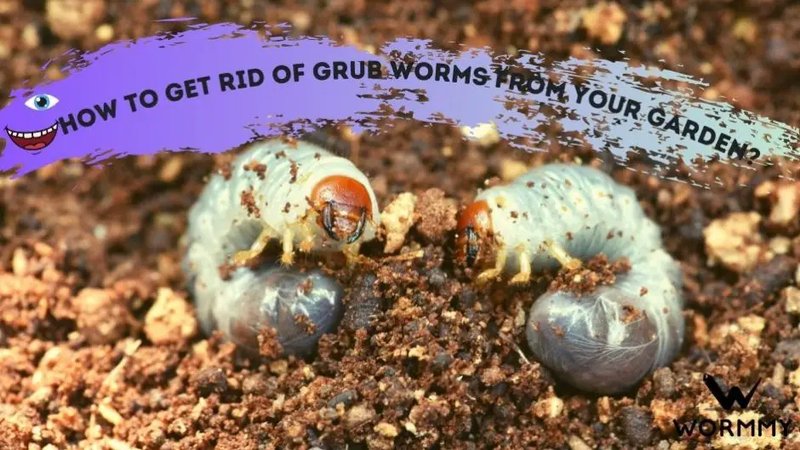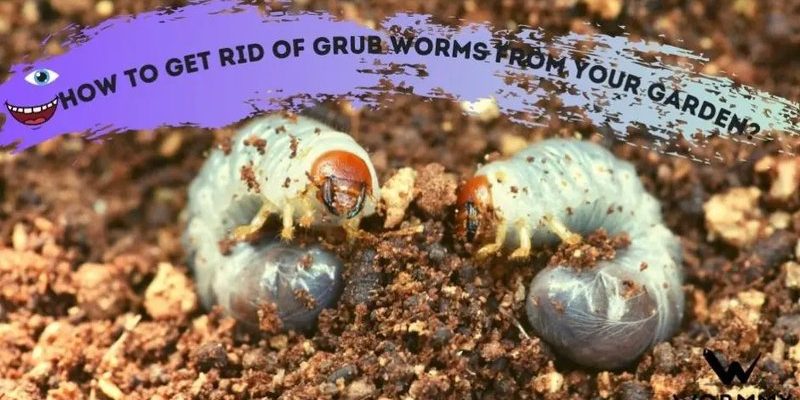
Grub worms, often the larval form of various beetles, thrive in moist, rich soil. Their favorite habitats? You guessed it! Your raised garden beds, filled with nutrient-dense soil where they can feast. They may not have a reputation as the cutest garden dwellers, but with a little know-how, you can manage their presence effectively and keep your plants happy. Let’s dive into what grub worms are, how to identify them, and what you can do to tackle them head-on.
What Are Grub Worms?
At their core, grub worms are the larvae of beetles, such as Japanese beetles or June bugs. These little guys typically have a C-shaped body and are cream-colored, with a soft texture. You might find them lurking underground, munching on roots and plant material. They can be a bit like unwelcome guests at a meal—while they’re having a good time, they’re making a mess of your garden.
Interestingly, grub worms play a role in the ecosystem. They help break down organic matter and contribute to soil health—when they’re not feasting on your beloved vegetables. This dual nature makes them tricky to deal with; while they’re not always harmful, their presence can be detrimental to young plants that are still getting established.
Understanding the life cycle of these pests can also be beneficial. Grub worms emerge in the summer as adult beetles, lay eggs, and the larvae stage can last several weeks to several months depending on the species and environmental conditions. That means if you can catch them early, you might prevent a larger problem down the line.
How to Identify Grub Worm Infestations
So, how do you know if grub worms have set up camp in your garden? Start by looking for some telltale signs. You may notice:
- Wilting Plants: If your plants are drooping or just don’t look as vibrant as they should, it could be a sign of grub activity.
- Holes in Roots: When you dig around, check for roots that have been chewed or damaged. This is a classic indicator of grub presence.
- Patchy Grass or Soil: In garden beds, you might notice areas where the soil looks disturbed or where grass is thinning out.
If you suspect grubs, try gently digging around the root zone of affected plants. If you find a C-shaped white or cream-colored worm, congratulations—you’ve officially found a grub worm! Being proactive and identifying them early can save your plants from greater harm.
Natural Remedies for Grub Worms
Now that you know what you’re dealing with, let’s talk about how to tackle these pests without resorting to harsh chemicals. There are several natural remedies that can help:
Nematodes
One of the most effective ways to deal with grub worms is by introducing beneficial nematodes, tiny worms that prey on grubs while being harmless to your plants. Simply mix these microscopic helpers into your garden soil, and they’ll hunt down and destroy the grubs.
Beneficial Insects
Encouraging beneficial insects, like birds and ground beetles, can naturally reduce grub populations. Consider creating a habitat for birds in your garden, or plant flowers that attract these helpful critters. Here’s a fun thought: think of it as turning your garden into an insect-friendly hotel!
Homemade Soaps and Oils
Creating a soap solution using natural dish soap or neem oil can also deter grub worms. Mix a few drops of soap with water and spray it on affected areas. Not only does this help repel pests, but it’s safe for plants and the environment.
Cultural Practices to Prevent Grub Worms
Preventing grub worms starts long before they appear. By establishing certain cultural practices, you can make your garden less inviting to these pests.
Soil Health
Healthy soil is key to a thriving garden. Keep your soil well-aerated and rich in organic matter. Regularly amend your beds with compost, as this not only nourishes your plants but can also deter pests like grubs.
Crop Rotation
Practice crop rotation if possible. By changing the location of your plants each season, you can confuse and disrupt the life cycle of grubs and other pests. It’s like changing your route home to avoid traffic—you get a smoother ride!
Proper Watering Practices
Grubs thrive in moist environments, so monitor your watering habits. Instead of frequent shallow watering, opt for deeper watering less often. This promotes healthier root systems and can make conditions less favorable for grub worms.
When to Seek Help from Professionals
While many gardeners prefer to handle issues organically, there may come a time when grub infestations are too overwhelming to manage on your own. If you notice significant damage despite your efforts, it might be time to call in the pros.
Professional pest control services can provide targeted treatments that are effective against grubs but won’t harm your plants. They can also offer advice tailored to your specific garden situation. Don’t hesitate to reach out for help if you feel stuck!
Dealing with grub worms in raised garden beds can be daunting, but it’s not insurmountable. By understanding what they are, how to identify them, and employing both natural and preventive measures, you can keep your garden healthy and flourishing.
Remember to keep your eye out for signs of trouble and act quickly when you spot them. Your garden is your sanctuary, and with a little effort and knowledge, you can protect it from these pesky invaders. Happy gardening!

